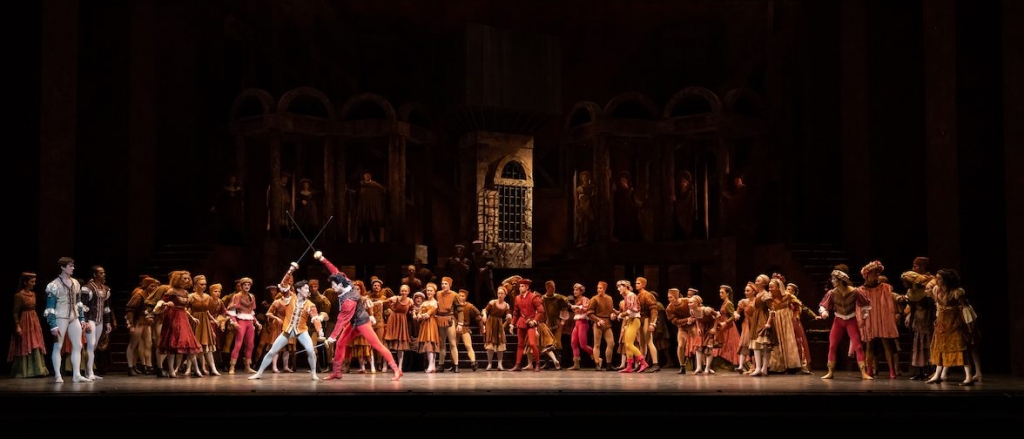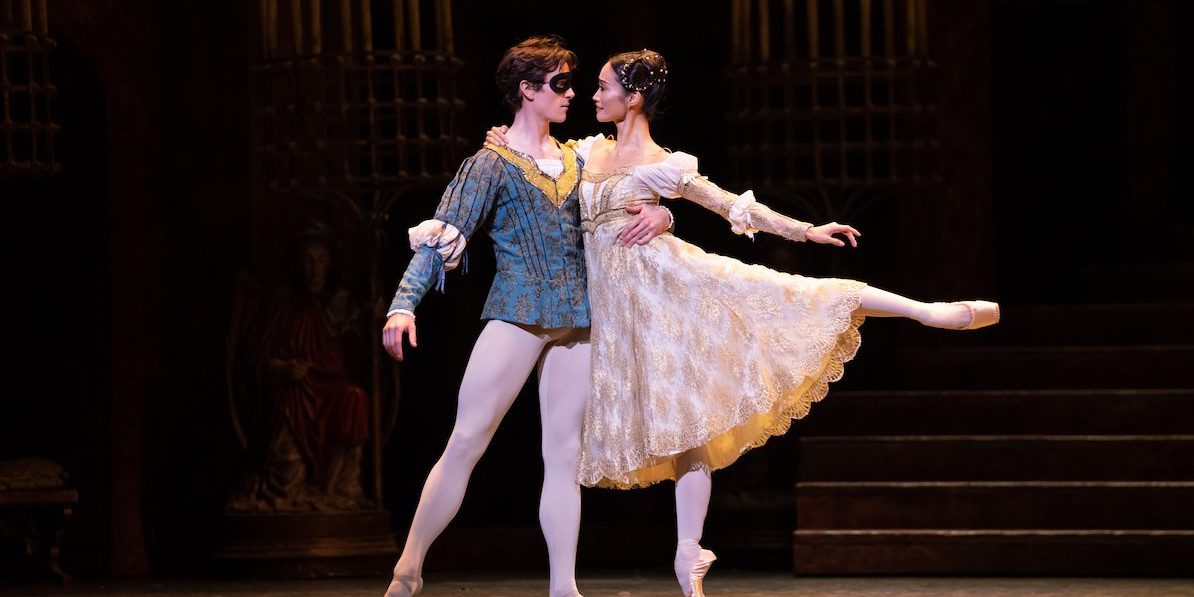The Royal Ballet returns with a bang to Covent Garden with its much-loved production of Prokofiev’s ‘Romeo & Juliet’, first developed at the height of the Cold War in the 1960s with Nureyev and Fonteyn leading the first cast. How well does it stand up after so many iterations? Outstandingly.
The main reason why everything still works so well is that while there is much that is sumptuous, there is no excess; and at every point the creative aspects focus unremittingly on realising and intensifying the original drama. Orchestration, choreography, sets, costumes, lighting, and direction fuse to create a canvas as detailed and majestic as Rembrandt’s ‘The Night Watch.’ It is a textbook case of focus on unlocking the potential of the original in ballet guise without contemporary faddishness.
Prokofiev and Macmillan’s skills mesh perfectly with one another, each steeped in the classical forms and traditions of ballet, to be sure; but prepared to risk a fresh naturalism in the search for dramatic truth even if that means embracing ugliness and violence along the way. There is no cheap comfort or reconciliation to be found here, only a story set out with single-minded precision followed through to an inevitable, tragic end.
The orchestra under regular ballet conductor Koen Kessels was on magnificent form, as much relishing the thunderous cumulative dissonances of Tybalt’s death as the many delicate and characterful solos that the composer democratically scatters across all divisions. It was particularly delightful to have four mandolins at work in a box for the dance which provides the charming interlude ahead of the denouement of Act Two.
Above all this is an ensemble work with many crowd scenes, whether marketplace or ballroom, in which everyone on a full stage was acting and interacting compellingly as well as dancing with technical skill. The core set by Nicholas Georgiadis may seem like an elaborate exercise in Renaissance perspective but its two staircases with a colonnade above and below work because they are so simple in providing multiple levels and entry points for processions, fights, and flights.
 The long run of performances into February allows the Royal Ballet to showcase a variety of their top talents in the lead roles. On this occasion it was the debut of William Bracewell and Fumi Kaneko, both of whom delivered their roles with passion and pathos and fine technical skills. In a short review, two examples must suffice: Macmillan’s choreography often requires very elaborately expressive lifts which place great strain on both dancers – these were carried off with rare grace and lack of apparent effort. Moreover, in the more extreme expressionism of the final scenes both dancers found a lyrical depth of embodiment that poignantly channelled the emotional pressures of the scenes they were depicting.
The long run of performances into February allows the Royal Ballet to showcase a variety of their top talents in the lead roles. On this occasion it was the debut of William Bracewell and Fumi Kaneko, both of whom delivered their roles with passion and pathos and fine technical skills. In a short review, two examples must suffice: Macmillan’s choreography often requires very elaborately expressive lifts which place great strain on both dancers – these were carried off with rare grace and lack of apparent effort. Moreover, in the more extreme expressionism of the final scenes both dancers found a lyrical depth of embodiment that poignantly channelled the emotional pressures of the scenes they were depicting.
They were supported by some finely etched character roles. Luca Acri lent Mercutio the humour and sense of fun that is so essential as a counterpoise to tragedy in the ballroom and market scenes. His lightness of touch was offset starkly by the notably nasty Tybalt of Ryoichi Hirano, whose dancing, swagger and swordsmanship were of top-quality. As Juliet’s father, the vastly experienced Gary Avis asserted a severe patriarchal authority in Act 3, which matched the coldness of Nathalie Harrison as his wife. Mica Bradbury bustled and chided humorously as the Nurse and Lukas B. Brændsrød, Bennet Gartside and Calvin Richardson made the most of the relatively ungrateful roles of Paris, Friar Laurence and Benvolio.
Just as there is nothing precious or pretty about Macmillan’s choreography, there is no false sentiment in this production. The lighting scheme by John B. Read found many moments of shimmering, night-time intimacy to intensify the mounting layers of dreamy eroticism in the Balcony scene ‘pas de deux’, and the (uncredited) fight director did a great job in ensuring that we believed in the bloody cost of the rivalry of the Montagues and Capulets. Costumes had all the right showy Renaissance bling but did not hamper the athleticism of the dancers.
For this reviewer the revival of this old favourite was quite simply his most joyous and all-enveloping experience in a theatre since re-opening. Some wines just get better and better with age.

